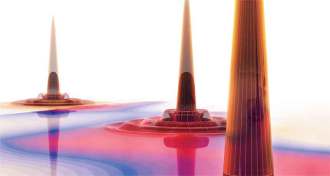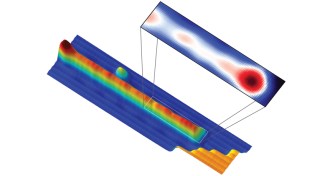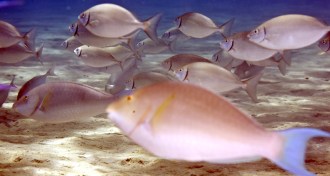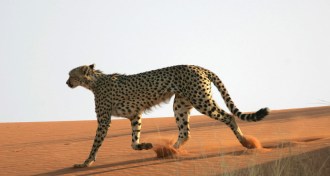All Stories
-

-
 Health & Medicine
Health & MedicineZero calories and other awe-inspiring science tales
In this issue, reporters look at artificial sweeteners, resurrecting a West Coast plant, quasiparticles and the future of our magazine and its parent non-profit, SSP.
By Eva Emerson -
 Science & Society
Science & SocietySSP’s new leader has a habit of making things happen
Maya Ajmera takes the helm as the president and CEO of the Society for Science & the Public and publisher of Science News.
By Science News -
 Quantum Physics
Quantum PhysicsQuasiparticles help physicists make sense of the world
To improve semiconductors, superconductors and other materials, physicists view a particle and its surroundings as one entity.
By Andrew Grant -
 Plants
PlantsClimbing high to save a threatened West Coast plant
A group of scientists hopes to save a cliff-hugging plant threatened by invasive grasses, drought and fire in California’s Santa Monica Mountains.
By Nsikan Akpan -
 Health & Medicine
Health & MedicinePregnant women’s immune systems overreact to the flu
A new study offers an exception to the assumption that a pregnant woman’s immune system fades to keep from attacking the growing fetus.
-
 Physics
PhysicsSignal of elusive Majorana particle emerges in a nanowire
New evidence supports existence of exotic Majorana particle — a particle that is its own antiparticle.
By Andrew Grant -
 Planetary Science
Planetary ScienceAsteroid impact did not form the moon’s largest plain
The moon's vast flatland — called Oceanus Procellarum — may have been formed through tectonic-like activity billions of years ago, scientists say.
-
 Animals
AnimalsInvasive rabbitfish team up to raze algal forests
Tropical rabbitfish have expanded into temperate Mediterranean waters, where they destroy algae forests by gobbling both young and adult algae.
-
 Animals
AnimalsLacking ice, huge walrus herd congregates on Alaska shore
A large group of walruses has hauled out on the beach near Point Lay, Alaska. The animals have been forced onto shore due to a lack of sea ice in the region.
-
 Oceans
OceansSatellites expose mysteries of the deep ocean
New detailed map of Earth’s seafloor reveals never-before-seen formations.
-
 Animals
AnimalsLooking for, not catching, prey drains big cats’ energy
For some big cats, ambushing prey in quick attacks may ease the high energy cost of hunting, new studies show.
By Meghan Rosen